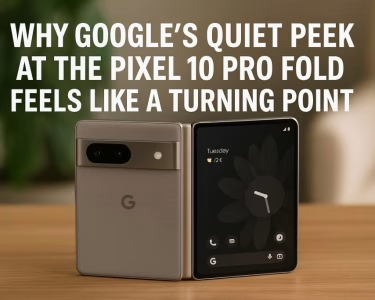Introduction:
Can you believe your eyes anymore?
In 2025, the line between reality and illusion has never been thinner. Thanks to quantum sensors and AI-generated content—especially deepfakes—we’re facing a new era where even the most realistic-looking videos can be completely fake. This isn’t just a sci-fi plot anymore. It’s real, it’s here, and it’s reshaping how we perceive truth.
Let’s dive into how quantum sensors could become our last line of defense in the fight for authenticity—and what this means for the future of trust in our tech-driven world.
What Are Deepfakes, and Why Are They So Dangerous?
Deepfakes are hyper-realistic videos or audio clips created using AI, particularly deep learning algorithms. They can swap faces, mimic voices, and even generate entire speeches that never happened. Originally seen as cool tech demos, they’re now being used to spread misinformation, impersonate public figures, and erode public trust in media.
From fake celebrity interviews to bogus political statements, deepfakes pose a serious threat to our ability to distinguish truth from fiction—especially in a world where millions consume content without questioning its origin.
Enter Quantum Sensors: The Unexpected Hero?
You’ve probably heard of quantum computing, but quantum sensors are the quieter cousin with mind-blowing potential. These ultra-sensitive devices can detect the tiniest variations in physical phenomena—like magnetic fields, time, and light—at quantum-level precision.
So how do they fit into the deepfake dilemma?
Well, while deepfakes can trick the human eye and even traditional software, quantum sensors can analyze physical properties of real recordings—like photon behavior or atomic-level signatures—that are almost impossible to replicate artificially. In other words, they can detect whether a video or audio clip has the natural “fingerprint” of a genuine event.
Think of quantum sensors as ultra-advanced lie detectors for multimedia content.
Real-World Use Cases: Quantum Truth Detection
Let’s explore how this could work in practice:
1. News & Journalism
Imagine news agencies using quantum sensor-based verification to authenticate footage before broadcasting. This could eliminate false war footage, faked protest videos, or misleading viral content from ever going mainstream.
2. Court Evidence
In legal settings, video evidence is gold—but what if it’s fake? Quantum sensors could help forensic teams validate whether footage submitted in court was tampered with, bringing a whole new level of rigor to digital justice.
3. Social Media & Content Platforms
Major platforms like TikTok, YouTube, or Instagram could use embedded quantum tagging to track whether uploaded videos are real or AI-generated. With deepfake detectors powered by quantum data, platforms could flag suspicious content before it spreads.
Challenges Ahead: Can We Trust the Tech?
Of course, quantum sensors aren’t a silver bullet. They require high-end hardware, careful calibration, and global cooperation to work at scale. There’s also the philosophical twist: if we need quantum machines to tell us what’s real, have we already lost the battle for truth?
And let’s not forget: the same quantum tech could be used to create even more convincing deepfakes. It’s a classic case of the sword and shield evolving together.
Ethics, Responsibility & the Human Element
This conversation goes deeper than tech—it touches the core of our digital ethics.
- Who controls truth verification?
- Will users have access to these tools, or will they be limited to governments and corporations?
- How do we protect privacy while verifying authenticity?
These are questions we need to answer now, before deepfake technology becomes even more advanced.
Conclusion: The Future of Trust Is Quantum (and Human)
The rise of deepfakes has shattered the old saying “seeing is believing.” But quantum sensors offer a glimmer of hope—a new technological frontier where we can once again anchor ourselves to reality.
Still, tech alone can’t save us. We need transparency, ethical standards, public awareness, and yes—a little skepticism—to navigate the coming storm.
In the end, the fight against deepfakes isn’t just about stopping lies. It’s about reclaiming our trust in what we see, hear, and believe. And that battle starts now.





